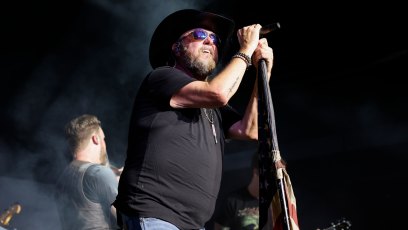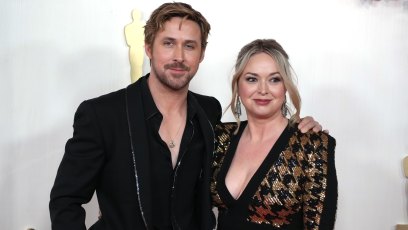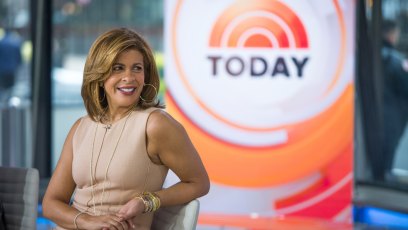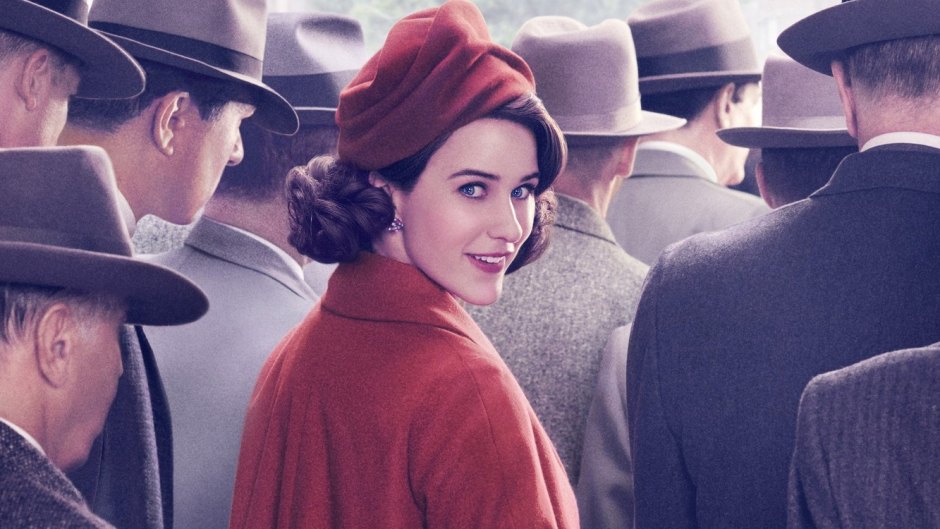
Amazon Studios
‘The Marvelous Mrs. Maisel’ Is A Marvel At The Emmys And Beyond
How do you follow up something as beloved as The Girlmore Girls? If you’re that series’ creator, Amy Sherman-Palladino, you create a show called The Return of Jezebel James (which lasted three episodes in March 2008), another called Bunheads (a single season in 2012), write a four-episode reunion series called Gilmore Girls: Year in the Life in 2016, and then, the following year, create something called The Marvelous Mrs. Maisel — destined to become the belle of the Emmys.
Which, earlier the year, might have been hard to imagine. The title doesn’t exactly suck you in upon first hearing, does it? And it isn’t necessarily enhanced by its premise: a comedy-drama set in 1958 New York, following a Jewish housewife, who, after her marriage takes a hit, discovers that she has an ability for stand-up comedy that can be honed and possibly lead to great things.
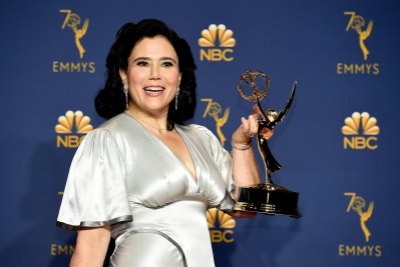
Well the same can’t be said for Mrs. Maisel, because that show was pretty perfectly honed from the moment it began streaming on Amazon. And the proof is in the Emmys. The show won for Outstanding Comedy Series in the categories of Director and Writer (both of which went to Amy), Outstanding Lead Actress in a Comedy Series for Rachel Brosnahan as Miriam “Midge” Maisel; Outstanding Supporting Actress in a Comedy Series for Alex Borstein as Susie, Miriam’s agent; Outstanding Single-Camera Picture Editing for a Comedy Series, Outstanding Music Supervision, Outsanding Casting for a Comedy series, and, naturally, Outstanding Comedy Series. That’s eight wins with an additional six nominations.
Creating The Marvelous Mrs. Maisel

While discussing the creation of The Marvelous Mrs. Maisel with Elle, Amy explained how this show’s various elements — stand-up comedy in late ’50s New York, the show’s “Jewishness” and its look —came together.
“My dad was a comic,” she explained, “so I grew up with him and his comic friends sitting around [adopts a grizzled New Yawk accent] eatin’ deli and talkin’ about the Greenwich Village basket houses. And I grew up in the San Fernando Valley, which is like growing up in a cardboard box. There’s nothing there; it’s just various shades of brown, so I had this fanciful idea of [New York’s Grenwich Village] as this place where everybody’s smart, everybody’s political, everybody’s brilliant and funny, and music is always playing. I’m sure many people who actually lived through it would say, ‘That’s not how it was at all — I had no hot water, there were rats, it was horrifying,’ but for me it was like Disneyland.”
“I knew I wanted to do a period piece,” she elaborated, “because I just don’t want to type ‘Snapchat.’ I don’t ever want to type it down in words. I’m not a social media girl anyhow, and I just want to go back to a simpler time, and use a rotary phone! And I wanted to do something with some scale. My dream for Gilmore Girls was always to give it more scale, and we just never got to do that, and quite frankly when you have Lauren Graham you don’t need scale. She is scale. She’s the mountain top. She’s a genius.”

There’s a certain strength to the character of Midge that Amy says was intentional without trying to tap into any sort of commentary on what’s going on in the world now with the MeToo movement. “We needed Midge to feel energetic and youthful and not like, ‘I’m watching my grandma walk around, and everything smells like schmaltz,'” Amy told Rolling Stone. “We wanted young girls to be able to watch Midge and find her as fascinating as their grandmothers would. We didn’t want to make a sepia-toned Hallmark card. We wanted her to be a vibrant heroine of today. And because of that, the issues that she deals with are issues that women deal with: love, marriage, betrayal, family, success in life. How ambitious should I be? How ambitious is attractive? Do I care? Was I meant to be a mother? I’m a mother, what the f— do I do now? Those issues are issues whether you’re alive today or [in] 1950.”
Bringing Mrs. Maisel to Life
For Rachel, research was the key to finding Midge as a character and having her embrark on this career as a stand-up comedian, which sort of happens by accident. As she related to Vulture, “I did a ton of research, specifically on the comedy scene of this time. The comedy world was unfamiliar to me, so it was fun to dive in. Midge is based on a lot of comics during that time, a lot of female comics, but also, she’s inspired for me by a few different women that I have known and loved. With all of that kind of mashed together, her voice emerged organically. It doesn’t feel like something that I’m putting on. I’m just hoping that it’s consistent.”

“I can’t claim to ever have done stand-up,” Rachel added. “Or to know in any way what it’s like to do stand-up, because, for Midge, when she starts doing stand-up it’s really just a prolonged mental breakdown. [Laughs] It’s not until much later in the season that she does start to hone her natural abilities and figure out how to turn that into stand-up. I get to f— it up and try again. There’s an audience that is paid to laugh at my jokes. I’m playing a character while I’m doing stand-up. Real stand-ups, man, they’re playing themselves. I’d be far too terrified.”
As to where The Marvelous Mrs. Maisel goes in Season 2, nobody’s really talking. Not even Amazon, which is only saying that it’s “coming soon.” If you haven’t streamed Season 1, you should do so. You have no idea what you’re missing.














